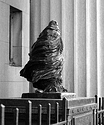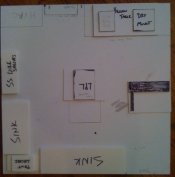Never....I have always printed without notes, over 100,000 prints for sure by now.
I only kept good prints that I thought were decent interpertations of an image, and one thing I do is for every image I made three finals.. each final was different and the next day ,,,, and over years I ended up knowing what workflow was best for me.. It took me years to admit that there is no such thing as the perfect print.
I still make a couple of density changes on work to this day ... so you could call me a insecure printer...
Yes it will become natural to you
after enough prints , and if you dodge and burn on every print, and if you look at the neg, projected image on easel and look at the print emerging in the developer, it will all start making sense and you will be free of documentation.
Also I split print and use a % style of printing where once I determine the base exposure I never change the timer or apeture during all by print cycle..
for example.... grade two filter 10 seconds gives me my base... then grade 5 filter 10 seconds as well.. I will hit the timer more than once for more contrast on the 5 or I will dodge during the grade 5 exposure if I want less..... I do not change the timer.
little things like this I feel speed up my work and less time spent trying to figure out little print routines.
Dodging is your weapon of mass destruction... It is the most important aspect of printing. Burning in is almost like salvage work, but dodging is the finesse and should be worked on every single image.
Also when making contacts for personal work I will make darker and lighter contacts**1/2 stop** from normal so when looking you see great differences and some happy surprises.
today I scan and in Lightroom play with density and contrast to get an Idea where I want to go with final prints.
If you keep test strips, if you keep bad prints for comparison sake, you are only weakening yourself.. If some one says to you I do not like your prints they are too dark , no big deal thats one person, if every single person looking at your work says its to dark then maybe you need to adjust.
Your style is determined on what you like and you should be the person steering that boat.
Did I mention I do not have a microwave and Classical music puts me to sleep.
Bob - Great info! Question - when you were learning to print did you take notes so as to learn what you liked/didn't? Or have you always printed in this manner? I find myself as a new printer making a few prints, flipping them over, reading my notes (f, mg setting, exposure, what was dodge/burned, etc), and using that to reaffirm my own style. As a newbie, I do print for what I like, I just don't know how I could have found out what I like without notes/reflection or does that part become natural at some point and you were able to print free of that documentation because your eye knows what to do to arrive at your own aesthetic w/o notes?







 )
)